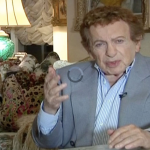Oh HuffPost Religion Page, what would I do without you? On days when I’m feeling neither sufficiently cantankerous nor inspired enough to write a post, I just turn to your pages of crapalicious silliness and I find something to write about.
Today’s gift came from Levi Ben-Shmuel, economic developer, singer-songwriter, Tai Chi practitioner and Kabbalist extraordinaire. As he considers what happens to patients during open heart surgery, he teaches us that:
Judaism and Kabbalah provide one answer as to how the essence of an open-heart surgery patient (as well as the rest of us) stays connected to the body: each of us has a soul that is transcendent to the physical body and is connected to the Divine. The soul has five levels intertwined with the human body in varying degrees. Nefesh, or vital soul, is the densest level and is most connected to physicality. It can be thought of as the life force, or chi, in the Taoist tradition. Ruach, wind or spirit, is related to the breath and is identified with emotional awareness. Neshamah, also related to breath, can be thought of as a defining quality of consciousness. Chaya, living essence, is a more refined level of soul connected to a transcendent level of consciousness. Yechidah, unity, is the soul in its essence; a spark of God beyond the plane of duality and in some sense is beyond the body.
These teachings, minus the Taoism, are from Rabbi Isaac Luria, the founder of Lurianic Kabbalah. From his center in 16th century Tzfat (Safed) his teachings spread to Europe and became the basis for Hasidism. Then, sometime in the twentieth century, a bunch of new agers grabbed ahold of it and the rest is nutbag history.
Luria lived and taught in the traumatic century following the Spanish Expulsion. It shouldn’t surprise us that there was a primal attraction to the kind of belly-button gazing provided by Jewish mysticism.
On the other hand, I have no idea how to explain contemporary adults who takes this stuff seriously. If they presented it as a metaphor for human psychology, then maybe I could see the attraction. But for many, like Ben-Shmuel, it’s all so very real:
This perspective of levels of soul implies that even as an indispensable part of the physical body and one’s consciousness is out of commission, there is a level of connection to the body that is maintained on planes beyond normal consciousness.
He goes on to cite the very weird work of two physicians, Larry Dossey and Allan Hamilton, who have made second careers out of “proving” supernatural piffle like this and the “power” of prayer.
So now, in all sincerity, could someone please explain to me how people smart enough to earn an M.D. could push this kind of thinking? I’ve read Michael Shermer’s book, Why People Believe Weird Things, and I still don’t get it. I can understand the attraction to Oprah, but these guys?














